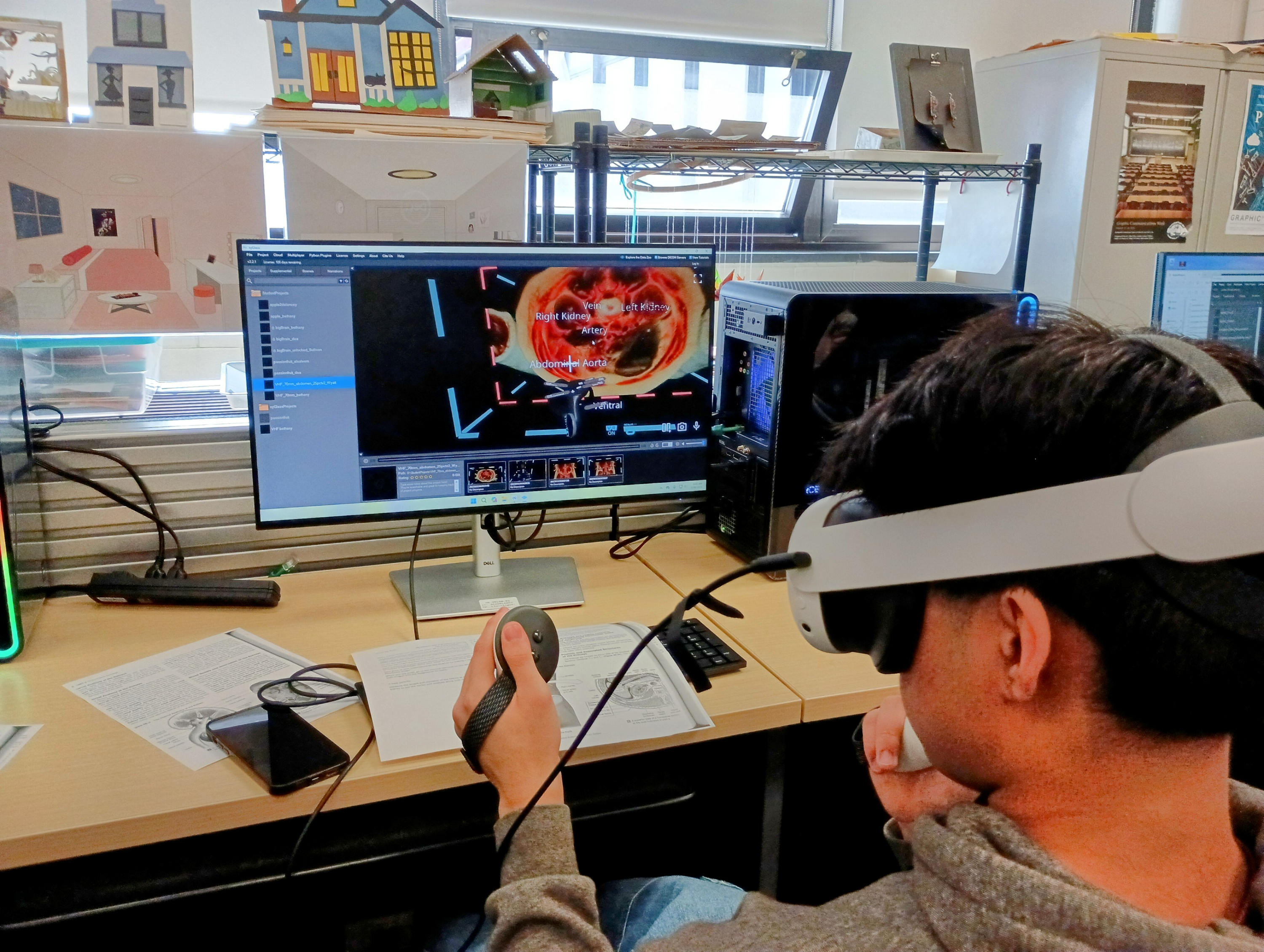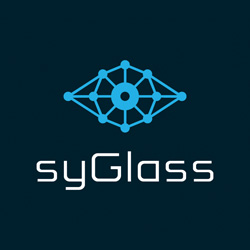Analyzing large-volume, multidimensional medical and scientific imaging data, such as computed tomography (CT) scans, magnetic resonance images (MRIs), and microscopy data, is a significant challenge in public health and biomedical research. Traditional methods rely on viewing 2D image slices—anywhere from tens to hundreds of thousands—for a complete 3D picture. This limitation affects accuracy in neuroscience, radiology, and surgical planning, where precise visualization is critical for diagnosis, research, and treatment. syGlass, a West Virginia University spinoff, created a software engine that inputs large volumes of imaging data and creates a 3D-data visualization, which can be seen and manipulated through virtual reality (VR) headsets.
Using syGlass, neuroscientists can view 3D reconstructions of brain scans to better understand neural structures. Physicians can project patient-specific CT scans or MRIs into 3D space for more precise viewing and surgical planning. Clinicians can measure abnormalities, splice through layers of tissue, and even record detailed video notes. syGlass has been adopted by over 100 research institutions worldwide, including Harvard University and Johns Hopkins Applied Physics Lab. syGlass co-founder and CEO Michael Morehead explains, “Very few people ever get to explore these amazing data sets from the cutting edge of scientific research. But through our technology, students, scientists, and science lovers can all put on VR headsets and crawl through these massive data sets.”

The original idea for syGlass came from George Spirou in 2013, then Director of the WVU Neuroscience Center and syGlass co-founder. Spirou received NIH R21 funding to create a software tool using existing hardware to navigate and visualize large data structures. By 2016, syGlass’s three co-founders, Spirou, Morehead, and Dr. Gianfranco Doretto (WVU), a computer vision researcher, developed the initial rendering engine of syGlass. After serving basic science researchers for three years, syGlass introduced the technology to high school students in 2019 to connect them with actual scientific research projects. The Chief Innovation Officer of the school district, Jason Osborne, implemented and shared the overwhelming success of the program, stating that “students were utilizing the 3D image data to learn about science and neuroscience, in particular, and they also assisted in answering very difficult scientific questions. We knew that implementing syGlass VR in the everyday classroom could be a game changer in the future of education.”
In 2020, syGlass received its first Direct-to-Phase II Small Business Innovation Research (SBIR) grant from the National Institute of Mental Health for further development of the technology. Subsequent NIMH grants have provided the resources to expand syGlass capabilities in neuroscience and in educational neuroscience programs. The company also benefitted from the NIH SEED Entrepreneurs in Residence (EIR) program in 2022. EIR advisors helped syGlass expand and develop a successful business model rooted in scientific research and education.
In 2020, syGlass received its first Direct-to-Phase II SBIR grant from the National Institute of Mental Health for further development of the technology.
The future of syGlass technology looks promising across multiple domains. syGlass aims to harness artificial intelligence for automated data analysis, enable cloud-based streaming of massive scientific datasets, and facilitate more interactive and accessible scientific publishing. Replacing traditional textbooks with immersive 3D data exploration prepares students for future technological environments by exposing them to cutting-edge research tools and creates opportunities for them to participate in research. Fundamentally, the technology has the potential to democratize scientific understanding, make complex data more accessible, and create a more interactive, engaging approach to scientific exploration and education.







